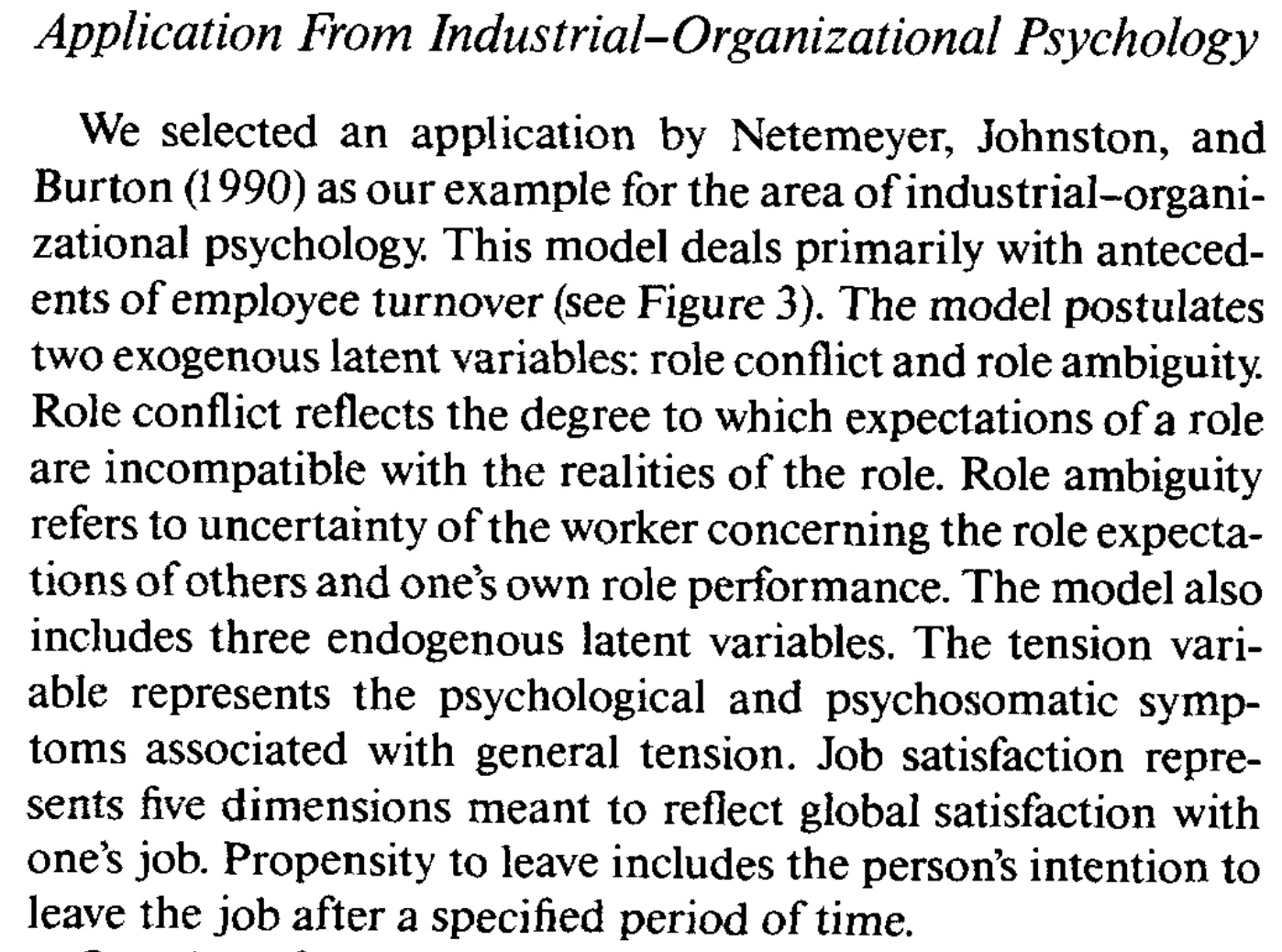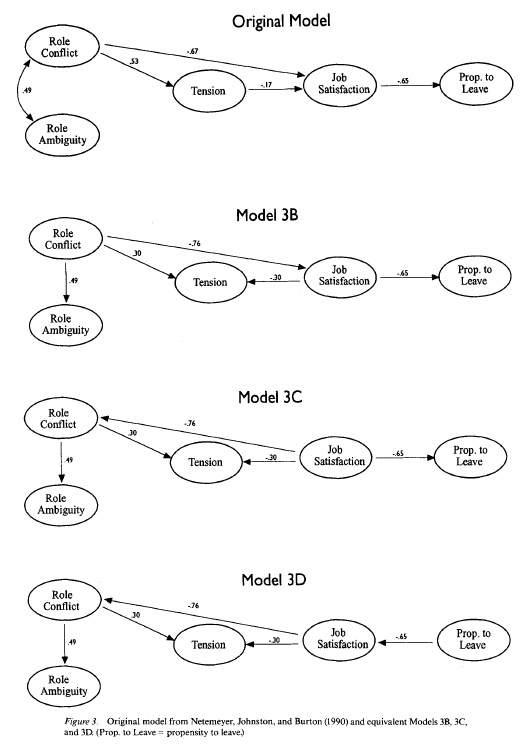11.1 Introduction
11.1.1 A Thought Experiment
Now that we are considering repeated measures data it is helpful to thinking about what repeated measures buy us. Here are a few thoughts:
With cross-sectional data:
- No sense of passage of time
- Cannot control for what happened at earlier timepoints
- Causality (e.g. cause precedes the effect, cause related to effect, plausible alternatives)
- Depending on true change process, cross-sectional slice may mislead
- Must rely more heavily on theory (e.g. equivalent models (MacCallum et al. 1993))
Equivalent Models and Time Dependence
In addition to allowing us to model processes unfolding across time, repeated measures also allow us to address an important problem in applied modeling: the existence of equivalent models.
Equivalent Models: An Example

Excerpt from MacCallum et al. (1993)
Examples of Equivalent Models

Figure 3 from MacCallum et al. (1993)
Now image these variables were collected at four different waves. This would eliminate the possibility of equivalent models under this scenario.
References
MacCallum, Robert C., Duane T. Wegener, Bert N. Uchino, and Leandre R. Fabrigar. 1993. “The Problem of Equivalent Models in Applications of Covariance Structure Analysis.” Psychological Bulletin 114 (1): 185. https://doi.org/10.1037/0033-2909.114.1.185.